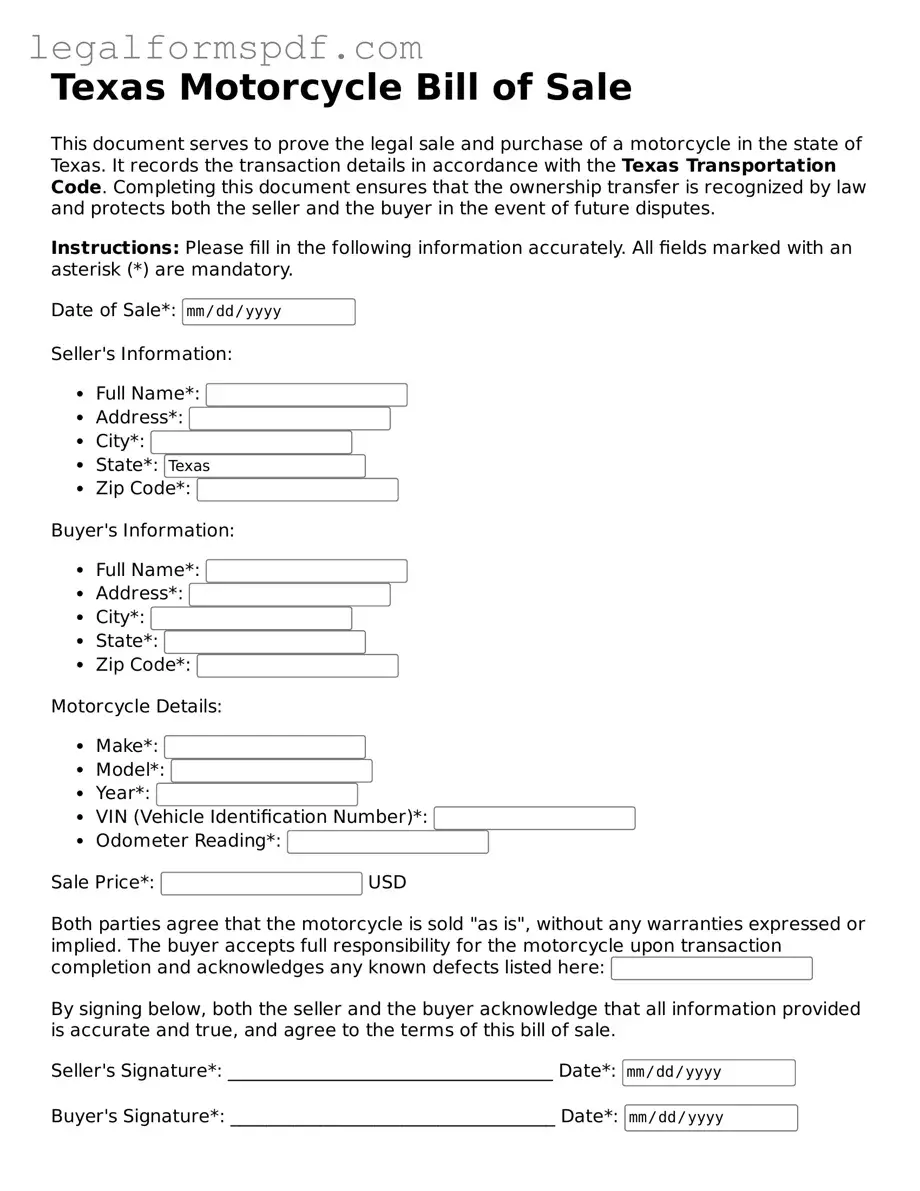The Texas Motorcycle Bill of Sale form shares similarities with the Motor Vehicle Bill of Sale utilized for the transaction of cars and trucks. Both documents serve as official records confirming the transfer of ownership from the seller to the buyer. They contain vital information such as the description of the vehicle (or motorcycle), the sale price, and the date of sale. Additionally, the particulars of the buyer and seller are documented, ensuring a transparent record of the transaction for legal and registration purposes.
Similarly, the Boat Bill of Sale form aligns closely with the motorcycle version in its function and structure. It is specifically designed for the buying and selling of boats but, like its motorcycle counterpart, records essential details like the boat's make, model, and serial number, alongside the identities of the transaction's parties. These details are crucial for the legal registration of the boat under the new owner's name, mirroring the process required for motorcycles.
Another document resembling the Texas Motorcycle Bill of Sale is the Trailer Bill of Sale. This document is used when trailers are bought or sold and contains information about the trailer being sold, including its size, type, and identification number. It also outlines the sale's specifics and records the involved parties' details, ensuring a clear transfer of ownership, similar to the motorcycle bill of sale.
The General Bill of Sale form also shares a foundational similarity with the Motorcycle Bill of Sale, capable of documenting the sale of various items beyond vehicles. Although broader in scope, it serves the same fundamental purpose: to provide a written record of the sale and transfer of ownership of an item from one individual to another. It details the item's description, sale price, and parties' information, underlining the transaction's legitimacy.
Comparable in nature is the Firearm Bill of Sale, which, despite its specific focus on the transfer of firearms, operates under the same principles as the Motorcycle Bill of Sale. It meticulously records the details of the firearm being sold, the sale price, and the identities of both the seller and the buyer. This document is crucial for ensuring the legal transfer of ownership, while also offering protection for both parties involved in the transaction.
Lastly, the Business Bill of Sale stands in line with the Motorcycle Bill of Sale by facilitating the transfer of ownership of a business. It meticulously documents the business being sold, including its assets, and outlines the terms and conditions of the sale. Just like motorcycle sales, this form plays a pivotal role in the legal transfer process, detailing the agreement between the buyer and seller to avoid future disputes.
